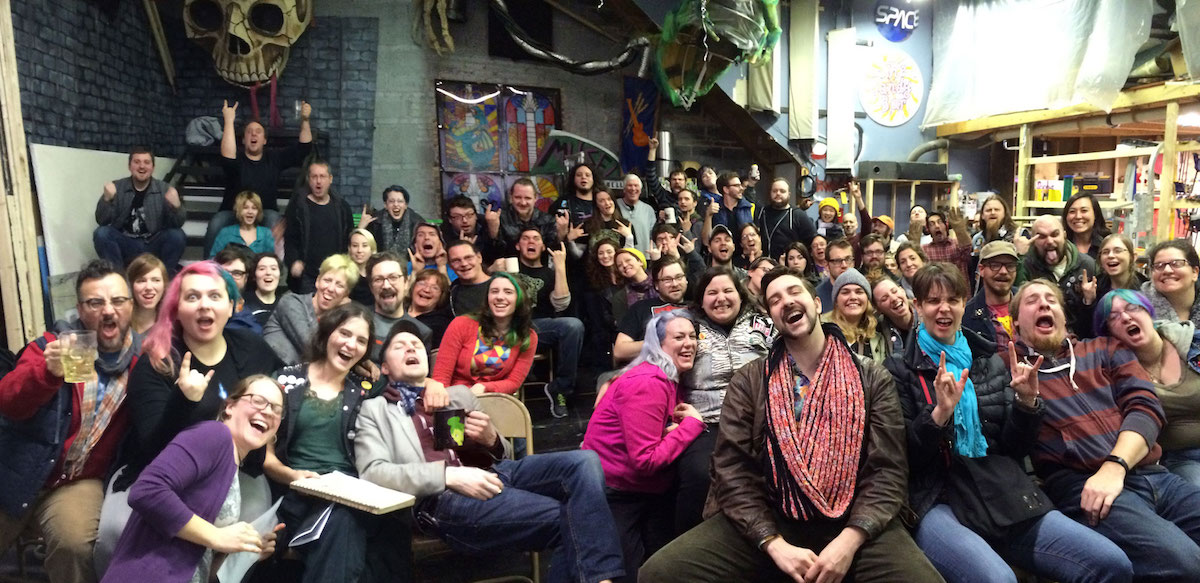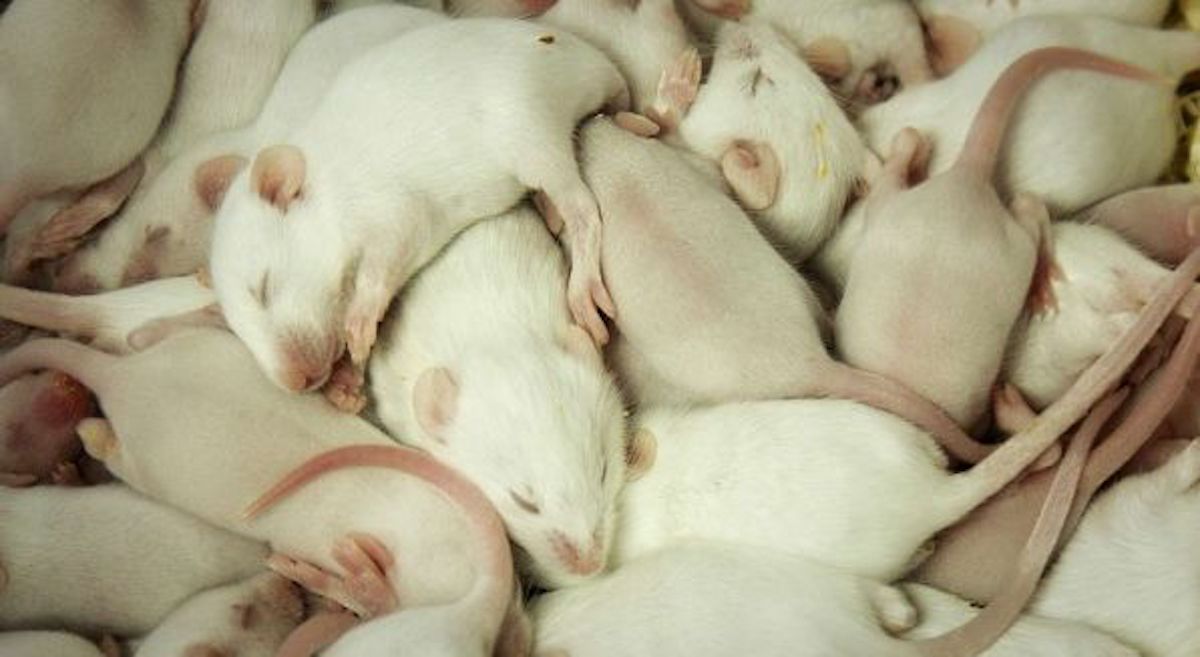A Discussion of Theo Anthony’s Rat Film by Angela N. Carroll
Theo Anthony’s Rat Film is a nonlinear feature about rats and residential segregation in Baltimore City. I hesitate to call the film a documentary because the work is not always transparent about the people and events it depicts. Spoiler alert: the fishing rod rat killers are actors.
As such, it falls into an interdisciplinary category of hybrid films; films that combine traditional documentary aesthetics with fictional narratives to create or reinterpret a supposed truth. Footage captured by Anthony, the writer/director, is spliced with archival photographs and virtual worlds. The result is a hyperreal framing of the city and its residents, which is at times entertaining, but reveals issues around the artistic privilege of representation. A few days after the film screened at this year’s MD Film Festival, Anthony shared some thoughts with me about his intentions in making the film.

“I think it was really important that I didn’t have an agenda with it and I think that goes back to my own issues with social justice film making,” he said. “The film is this catalytic surface where you bring your own history and your own interpretation to it and you react with the film.”
Staged characters and virtual elements feature prominently in the film. Viewers explore Baltimore City neighborhoods through ride alongs with Harold, a city pest control worker, or via GoogleEarth renderings, glitchy cartoonish presentations primarily displaying dilapidated regions of the city.
In one scene, rats scuttle through alleyways, in another we gain the perspective of a rat in a cage from the VR helmet of a young white woman. The films narrator is a disembodied ‘feminine god’ voice who occasionally interjects historical factoids and context. The virtual elements are typically grounded by disturbing realities; baby rats devoured by huge snakes, photographs of Baltimore ghettos in the early twentieth century, close-up shots of a jumping full grown rat as it attempted to escape from a trash can, huge rat house pets perched on the shoulders of their owners, segregationist redlining maps, and rats slaughtered by baseball bats or shot through the head at close range.
Audiences witness Harold waxing poetic about the infestation as a “people problem” not a “rat problem” as he travels to points of infestation around the city. I thought about this notion, that Baltimore has a “people problem” for a long time.
Johns Hopkins University and local housing authorities had similar assertions, considering dense population of black residents as problems, and primary catalyst for increased rat infestations. In 1942, researchers began investigating rat infestations in predominantly black impoverished neighborhoods that surrounded Johns Hopkins University. What their research revealed was that better sanitation–not more controlled environments–were the key to controlling the infestation.
Later studies of densely populated rat communities also catalyzed sociological experiments that measured the capacities of city plans to trigger mania or passivity in those populations. The film did not draw connections between those later experiments and contemporary policies of policing; lights, surveillance in black lower-income communities, but they did show that the deeply segregated city map are a residual manifestation of the redlining policies developed and perfected in this era.

While these historical instances were refreshingly revelatory, they were also incredibly brief. The prejudices that sustain disinvestment and segregation were blips in a greater narrative that centered the oddity of rats and rat infatuation in the city. What was not overtly stated but hinted was a classist relationship to rats; those with means, typically white bodied, had rats as pets. Those with less means, typically people of color or low income feared rats and their relationship to the rats was connected solely to the infestation of rats within their neighborhoods.
What concerned me, and Anthony also acknowledged during our interview, is that the film does little to show that rat infestation is everywhere in Baltimore City, not just in black communities.
“That’s something that the film doesn’t make clear enough that Guilford has rats too,” Anthony admitted. Documentary film rarely discusses the problematic positionality of the filmmaker or the possibility that representations presented from the Directors gaze that are presumed to humanize its subjects could further dehumanize. “My biggest fear as a film maker,” he said, “is that my critique will only become a sharper better sphere for the very thing that I’m trying to critique.”

Overall Rat Film has been well received and screens widely at international and domestic film festivals. The danger and intrigue of the film is that, for outsiders, it creates an exoticization of the city and its inhabitants that perpetuates a skewed representation of disparity.
What are the implications of a hybrid film that uncovers profound histories, but chooses to center other, more mundane narratives? What pertinent information is lost? What lasting imprints remain?
In Of Motion Pictures, a seminal essay about film histories, Lawrence Reddick wrote, “The implied associations that are indirectly suggested and repeated by the screen stories often leave residues that are more lasting than the evocative climaxes on the films.” Rat Film falls within a long canon of celebrated visualizations of Baltimore (The Wire is perhaps the most well-known), that present specifically narrow representations of the city and its inhabitants. Rat Film wants to be passive in its approach, and equally subversive in its method of critique, but its lack of engagement with the weaknesses of its hybridity proves more dangerous than neutral.
For all the film’s problems, at its core the work presents powerful intersections between segregation and rat infestation in the city. As the title may suggest, the film was saturated with uncomfortable, disturbing scenes. The rats, the persistent segregationist histories, the brutal ways the rats were killed, were all incredibly unnerving.
I was most haunted by the last few minutes of the film. The AI narrator projects that all the problems of rat infestation and disinvestment would be solved in a “new” Baltimore. Wait. What? One imagines that this new Baltimore will be void of rats and other undesirable populations.
Echoing early assertions that the infestation could only be eradicated through the erasure of low income populations is a dystopian and curious way to conclude the film. Rat Film leaves audiences with many unanswered questions, and a handful of bread crumbs about why disparities in Baltimore persist.
“I think people should be rightfully very skeptical” Anthony asserted. “There’s an exoticization of Baltimore and the history with all its ups and downs that has been enabled by these cultural portrayals of Baltimore. I hope some new conversation permeates through the surface of the film.”







